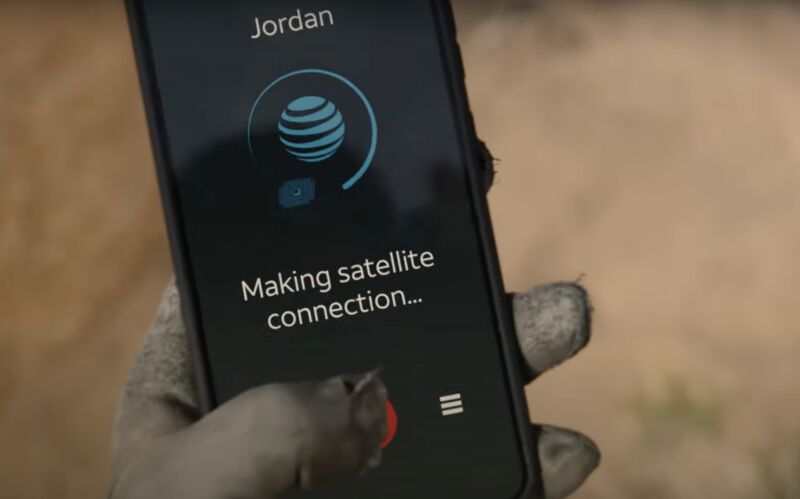
AT&T has been told to stop running ads that claim the carrier is already offering cellular coverage from space.
AT&T intends to offer Supplemental Coverage from Space (SCS) and has a deal with AST SpaceMobile, a Starlink competitor that plans a smartphone service from low-Earth-orbit satellites. But AST SpaceMobile’s first batch of five satellites isn’t scheduled to launch until September.
T-Mobile was annoyed by AT&T running an ad indicating that its satellite-to-cellular service was already available, and filed a challenge with the advertising industry’s self-regulatory system run by BBB National Programs. The BBB National Advertising Division (NAD) ruled against AT&T last month and the carrier appealed to the National Advertising Review Board (NARB), which has now also ruled against AT&T.
“It was not disputed that AT&T does not currently offer SCS coverage to its cellular customers… Therefore, the NARB panel recommended that AT&T discontinue the claim that SCS service is presently available to consumers or modify the claim to clearly and conspicuously communicate that SCS is not available at this time,” the NARB said in an announcement yesterday.
AT&T, which is also famous for renaming its 4G service “5GE,” reluctantly agreed to comply with the recommendation and released a new version of the satellite-calling commercial with more specific disclaimers. “AT&T supports NARB’s self-regulatory process and will comply with NARB’s decision… However, we respectfully disagree with NARB’s conclusion recommending that the commercial be discontinued or modified,” AT&T said in its statement on the decision.
The challenged advertisement, titled “Epic Bad Golf Day,” features actor Ben Stiller looking for a golf ball in various remote locations.
“The commercial near the end shows Mr. Stiller having finally caught up with his golf ball in a desert wasteland… He then places a cellular phone call to champion golfer Jordan Spieth, shown standing on a golf green, presumably so that Mr. Spieth can offer golfing advice,” the NARB ruling said. “An image in the commercial shows the call from Mr. Stiller to Mr. Spieth connecting through a satellite relay. Another visual shows Mr. Stiller’s phone stating that it is ‘Making satellite connection.'”
AT&T: Commercial shouldn’t be taken literally
AT&T’s appeal “points to a number of fanciful/ludicrous features of the commercial in Mr. Stiller’s golf ball odyssey to argue that reasonable consumers will not receive a message that satellite service is currently available, but will understand that AT&T is burnishing its brand by pointing to technological features currently under development,” the panel wrote.
T-Mobile countered “that the use of humor does not shield an advertiser from its obligation to ensure that claims are truthful and non-misleading,” and the NARB agreed.
“The panel views the humorous/fanciful nature of Mr. Stiller’s antics as a means of attracting the attention of viewers, but also as a means of emphasizing the utility of SCS technology—allowing for calls to be placed from remote locations not currently accessible to mobile service,” the industry self-regulatory group said. “The humor associated with Mr. Stiller’s golf misadventures does not cancel out the consumer communication that SCS service is currently available. In addition, the panel does not accept AT&T’s argument that the panel’s decision (or NAD’s decision being appealed) will interfere with the use of humor in advertising.”
The ad originally included small text that described the depicted satellite call as a “demonstration of evolving technology.” The text was changed this week to say that “satellite calling is not currently available.”
“Even assuming consumers will read [the disclaimer], one reasonable interpretation of ‘evolving technology’ is that the technology is currently available, albeit expected to improve in the future,” the NARB said.
The original version also had text that said, “the future of help is an AT&T satellite call away.” The NARB concluded that this “statement can be interpreted reasonably as stating that ‘future’ technology has now arrived. The next visual reinforces that message, as it shows Mr. Stiller communicating on a cell phone call while in a remote location, and the accompanying visual states ‘connecting changes everything,’ a message addressing the present, not the future.”
In the updated version of the ad, AT&T changed the text to say that “the future of help will be an AT&T satellite call away.”

